Tarpaulins are sheets of materials used to cover, protect and store, they come in a variety of weights depending on your project needs. Traditional tarps are often made from polyethylene but can also be made from canvas, PVC and other materials. Tarps consist of weaving patterns and different materials which contribute to strength and design.
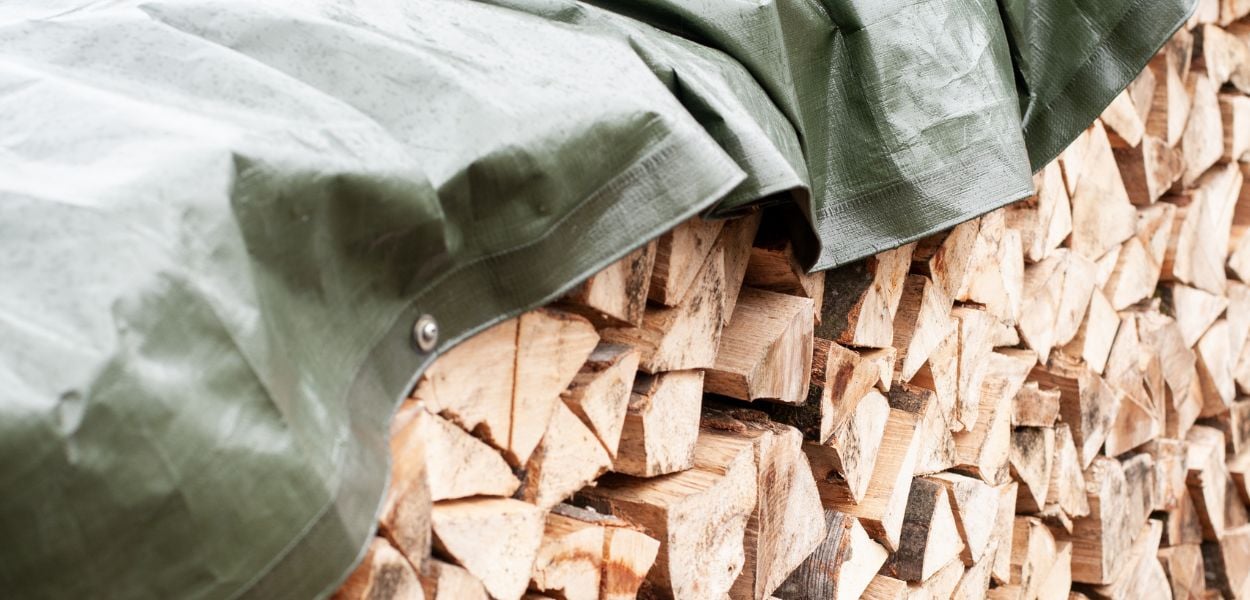
What is a tarpaulin?
Tarpaulin is a material that is used in a range of applications, including covering construction materials, camping shelters, temporary roofing and ground covers. Construction sites often use waterproof tarps for the protection of goods from extreme weather conditions and water penetration.
Different materials and weights of Tarpaulins have different specifications and provide varying levels of protection and water resistance. Tarps are used in domestic, commercial and industrial settings, the material choice depends on the project it will be utilised in, and some fabrics have better properties for certain projects.
Materials and Types
Which tarpaulin is best? The materials used to make the best tarp are predominantly polypropylene, polyethylene, PVC (poly vinyl tarps) and canvas. Other examples include nylon ground covers and low density polyethylene mesh tarps. Sometimes these options will also come in a variety of weights and thicknesses. We offer Lightweight Tarpaulin, Standard Tarpaulin and Heavyweight Tarpaulin, all of which are better suited to alternative uses.
One type is the automatic tarps, which can use a variety of materials but are used to cover swimming pools, trucks and cargo on a construction site in a convenient and quick way.
- Polyethylene Tarpaulin - Poly Tarps are made of a highly durable, versatile and waterproof material that can be used in domestic, commercial and industrial applications; subject to weight. Functions include temporary roofing at construction sites, ground sheeting, covering goods, garden use and camping shelters.
Cladco Tarps (polyethylene tarps) have protection against UV rays and are resistant to rotting and shrinking in harsh weather conditions.
- Cotton canvas tarpaulin/canvas tarp - Canvas tarps/canvas tarpaulins are a breathable, durable and water resistant choice. These canvas tarps are made with breathable material and are mostly used in outdoor scenarios, such as covering log piles, trailers, roofs and more. Canvas tarps are usually a relatively thick material.
- Polypropylene tarpaulin - This type of tarp material is waterproof, light and is used as a protective cover for temporary situations. Poly tarpaulins are made from a woven material and come in a range of colours, sizes and weights to suit. Polypropylene tarp is made of natural fibers, whereas polyester tarps are made from synthetic fibres, polyester materials are usually thicker.
- PVC tarpaulin/polyvinyl chloride tarp - Also known as poly vinyl tarps, this type of tarpaulin is a heavy material with UV resistance, durability and high tear strength; made from polyvinyl chloride. Due to their weather and water resistant properties, poly vinyl tarps are ideal for floor sheets, covering vehicles, inflatable products and transporting goods.
Compared with regular tarps, heavy duty tarpaulins (such as canvas) are usually more durable, waterproof and efficient at protecting goods. Heavy duty tarps, such as canvas tarps, are made to cover projects and materials for a longer period of time than lighter tarps due to being resistant to damage, although they are still only designed for a temporary covering.
As well as alternative weights and thicknesses, tarps are available in many sizes to suit your needs. Our Tarpaulins come in 4/5 different sizes to choose from, so you are covered if you only need a tarp for a small project or if you are looking to cover a large area; such as a roof on a construction site.
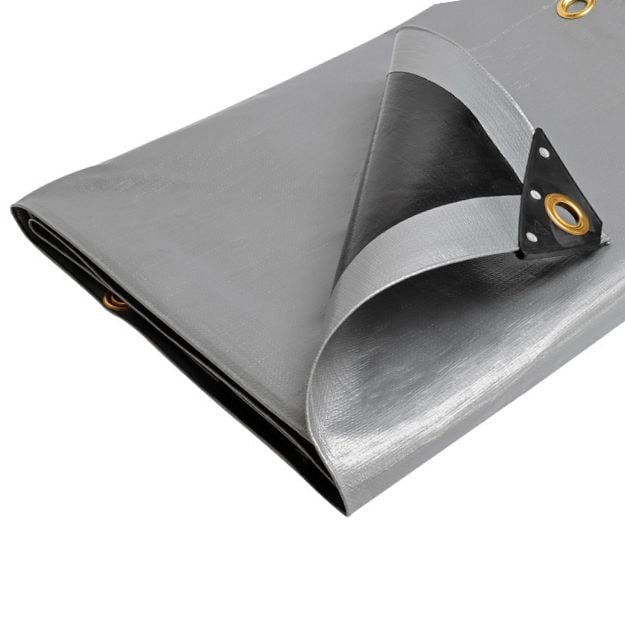
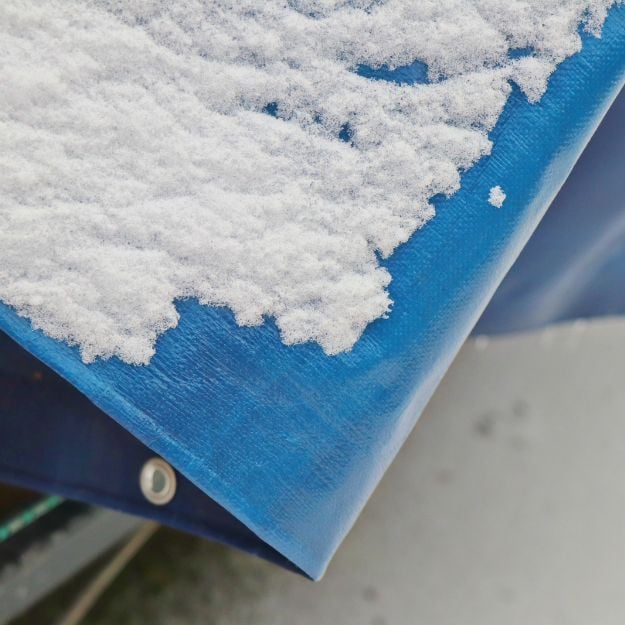
Factors Influencing Tarpaulin Selection
Factors that may influence your Tarpaulin selection will likely include:
- Durability and material strength - This is important when selecting a tarp, if covering more valuable goods or projects it is vital to have a substantial layer of protection. The addition of reinforced grommets with Polypropylene Rope and Tarpaulin Ball Bungees allows for flexibility and extra strength.
- Water resistance - Using a water resistant material for your tarp is vital when covering goods, such as logs or temporary roofing. Preventing materials from getting wet makes them resistant to rusting, damage and rotting. High quality tarps are often completely waterproof, provided they are installed effectively.
- Suitability for outdoor use and heavy-duty applications - If you are undertaking an outdoor project or covering materials outside, it is very important that your tarp can withstand high temperatures, cold temperatures and sun rays. If your tarp is not protective, it will not preserve the contents of the covering.
- Price - Tarps are a cost effective way to store and cover goods. A light weight tarp is usually the cheapest option to go for if you are using it for general home and garden use, for larger scale projects, such as roofing, we would recommend using a heavy duty tarp. The heavier the material of tarp indicates a higher cost, for example, canvas tarps, poly vinyl tarps and polyethylene tarps.
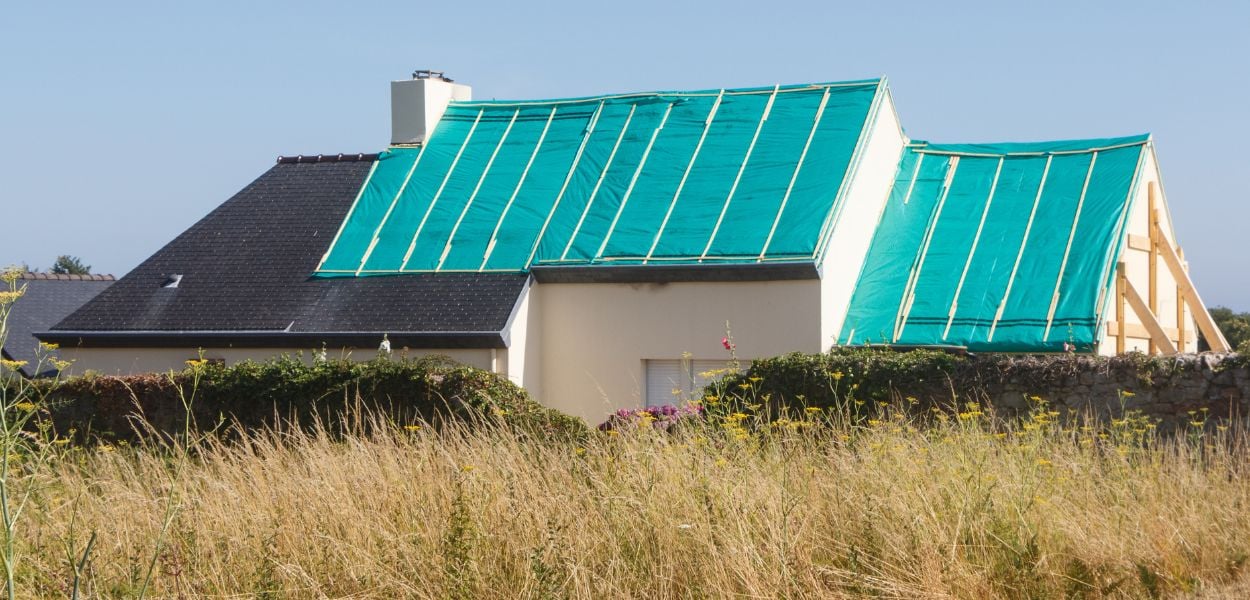
Comparitive Analysis
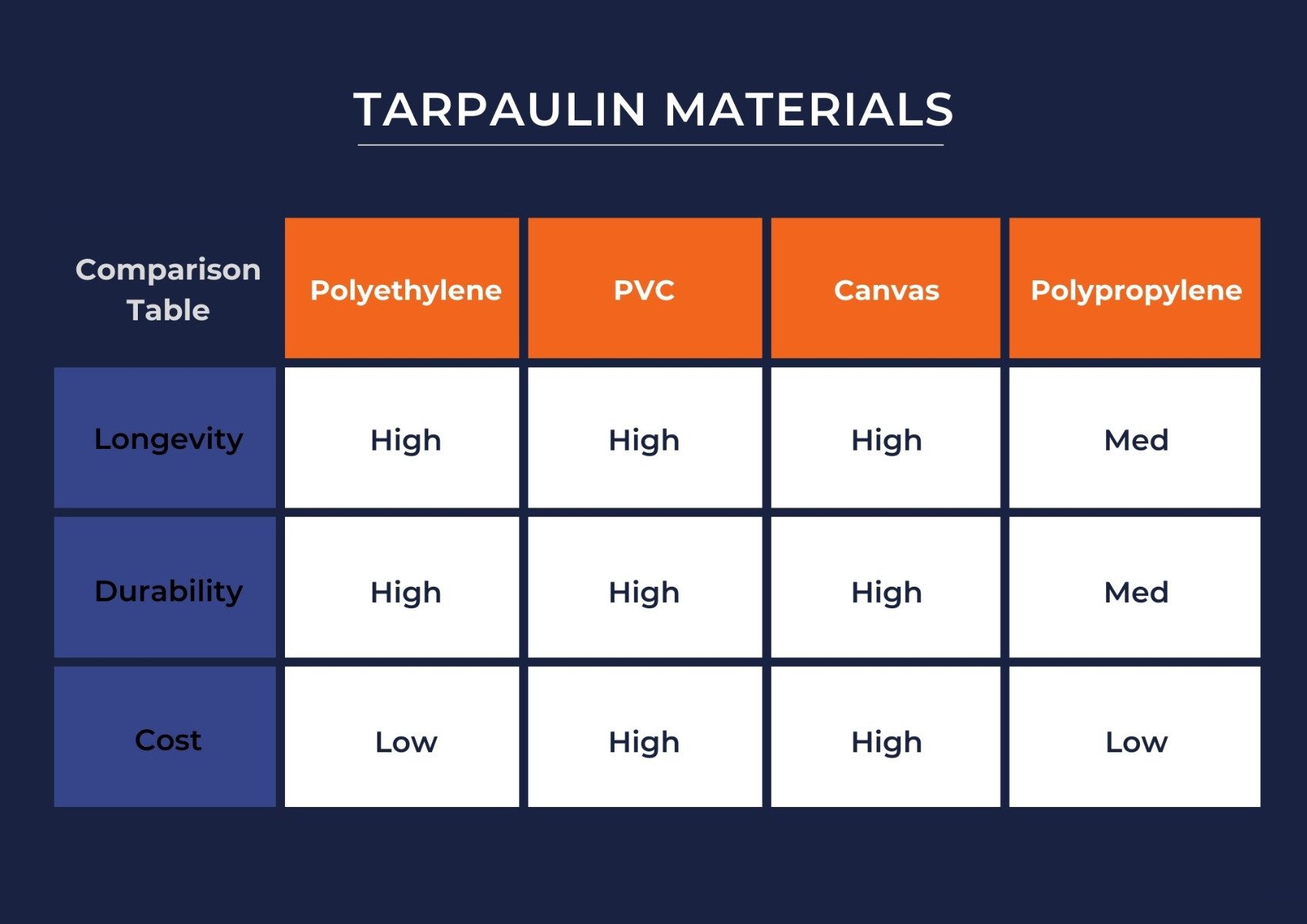
Tarpaulin Grades and Quality Indicators
To determine the quality of your tarp it is crucial to research what kind of materials you are considering, the quality of a tarpaulin may depend on factors such as thickness, weight and material.
Tarpaulin grades are determined by their GSM (grams per square metre). Cladco Tarps come in Lightweight (80gsm), Standard (170gsm) and Heavy Duty (270gsm), the higher gsm refers to a greater grade. If you are searching for a durable, thick and sturdy tarp, our Heavy Duty will be the perfect grade for you.
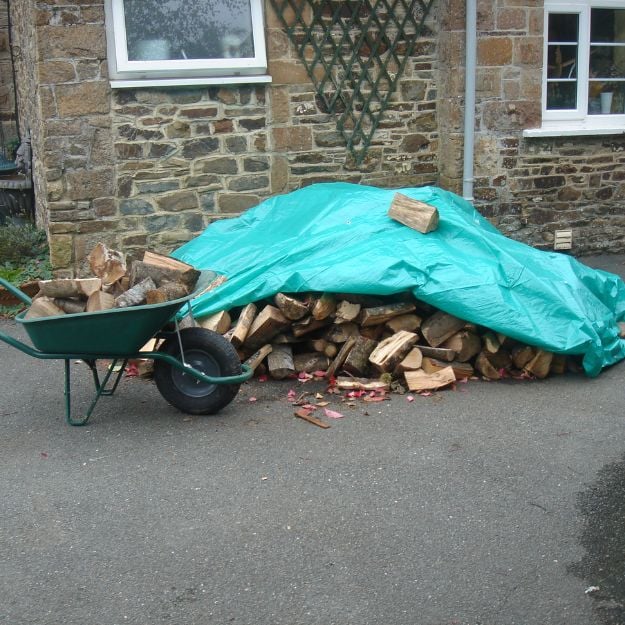
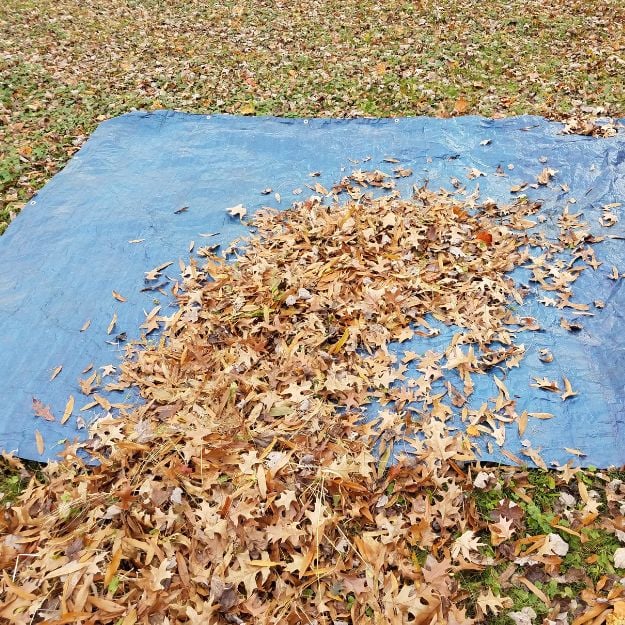
Environmental Impact and Sustainability
Tarps are often an eco-friendly option as they are reusable and last a while. The most sustainable tarp material is likely to be recycled plastic as it is repurposed and made from previously used plastics.
Maintenance and Care
Tips for maintaining your tarps:
Regular cleaning with a mild detergent to get rid of dirt, oil and debris. Allow the tarp to dry fully before storing away to avoid mildew or mould.
Store compactly away from extreme temperatures and sun rays in a cool, dry place. For extra care, store the tarp in a bag to prevent dust or insects from damaging it.
Examine your tarps for signs of wear and tear, so they can be treated promptly.
DIY Tarpaulin repair ideas:
Fabric repair kits, if your tarp has a minor hole or rip it may be possible to simply fix it at home with a kit.
Tape can be used to cover or pull a tear together, this will ensure your tarp remains waterproof and leakproof.
With some tarpaulin materials, you may be able to sew up any rips, holes or tears. Be sure to research the best kind of thread to use for this method.
Innovative and Unique Uses of Tarps
Wondering how to make full use of your tarpaulin? Here are a few ideas on how to get creative with your tarp:
Camping shelter - You could use your tarpaulin to create a makeshift camping shelter in your garden, a fun summer activity for all!
Slip 'n' slide - If you have a large tarpaulin you can turn your garden into a big slip 'n' slide, a great way to entertain the kids on hot summer days!
Wind protection - Your tarp could be utilised as an awning or windbreak to use when camping or spending time outdoors.
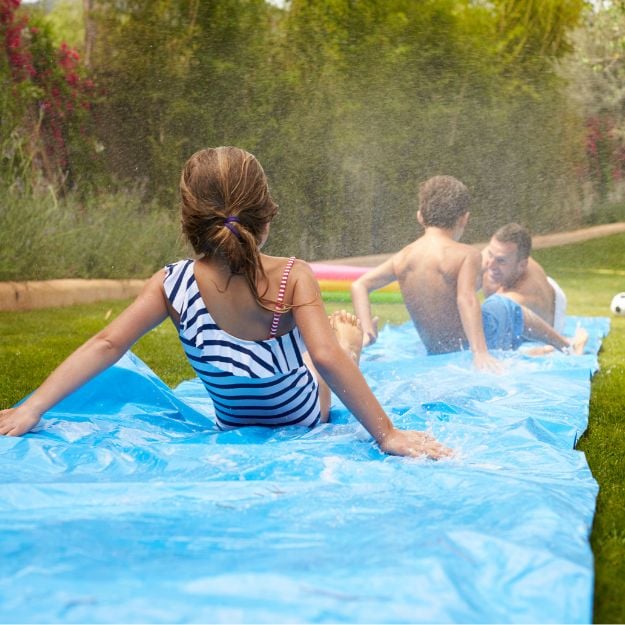
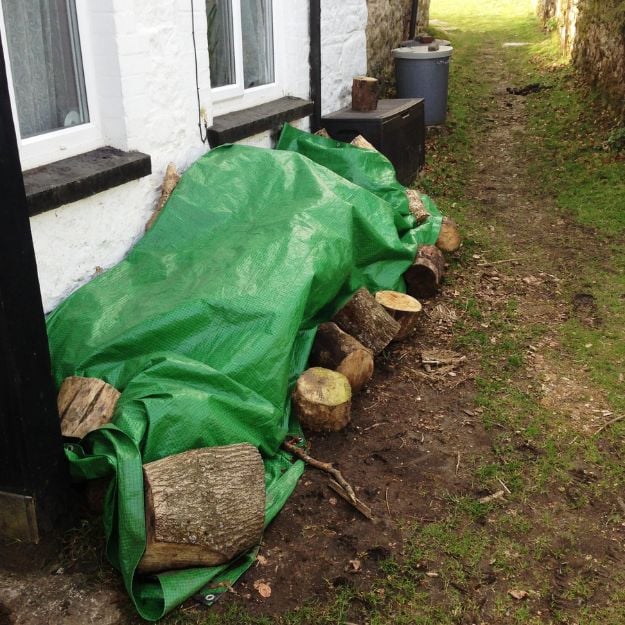
Conclusion
So, which Tarpaulin is best? To conclude, it is clear to see that all materials of tarps have their positives and can be used for various applications. Both canvas and poly vinyl tarps are usually thicker, which allows less flexibility but more durability. Polyethylene tarpaulins come in different thicknesses, allowing the choice when it comes to different projects and uses.
When selecting which tarp material you would like to use, it is important to consider both practical and environmental impacts. Cladco polyethylene tarpaulins come in a variety of lengths and weights to suit all kinds of projects, from covering wood stacks to temporary roofing applications. It is dependent on your needs which tarpaulin you choose to use, some materials have more beneficial factors than others but will not be suitable for your individual uses.
